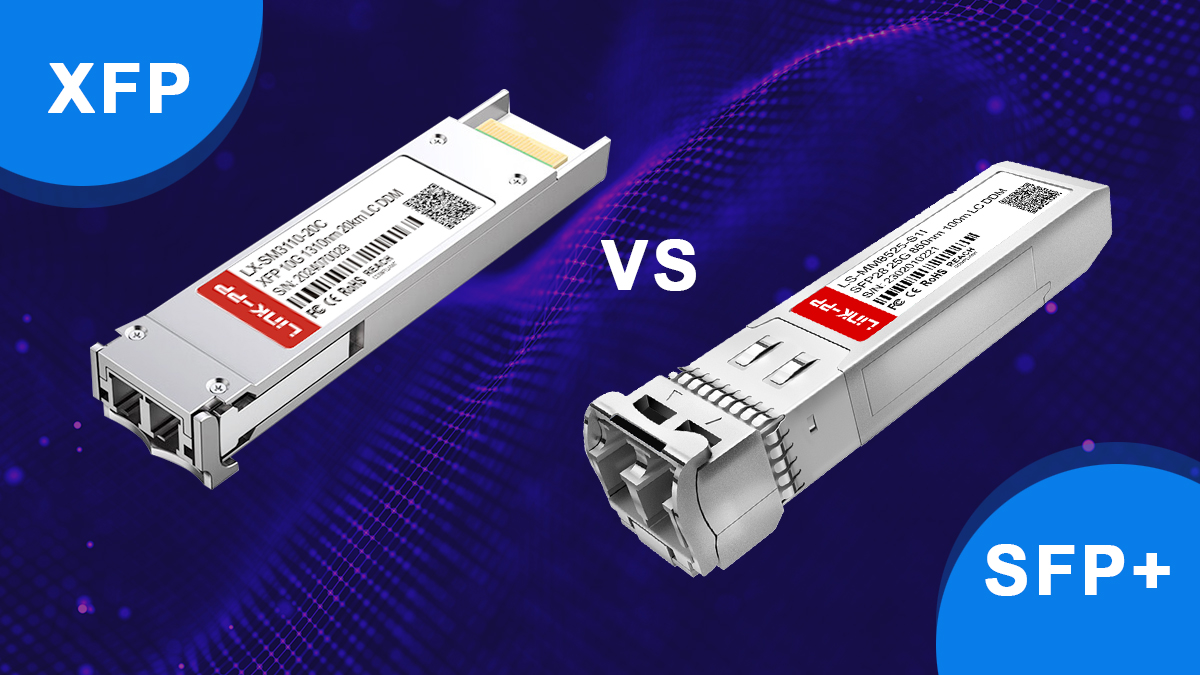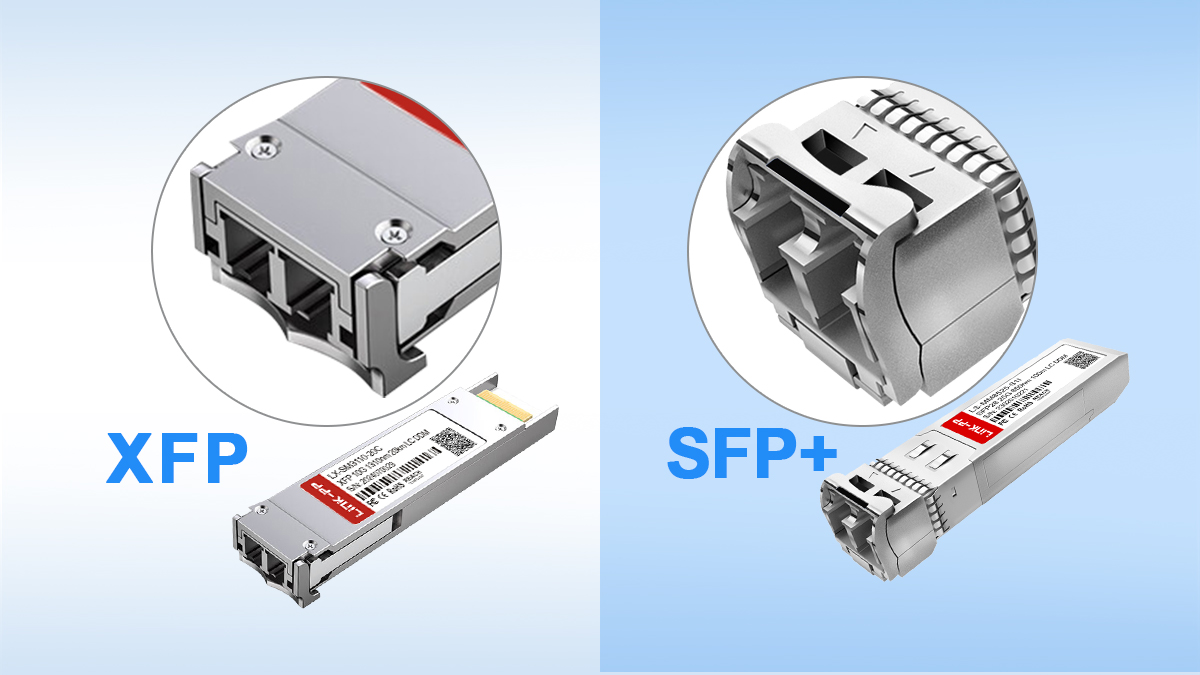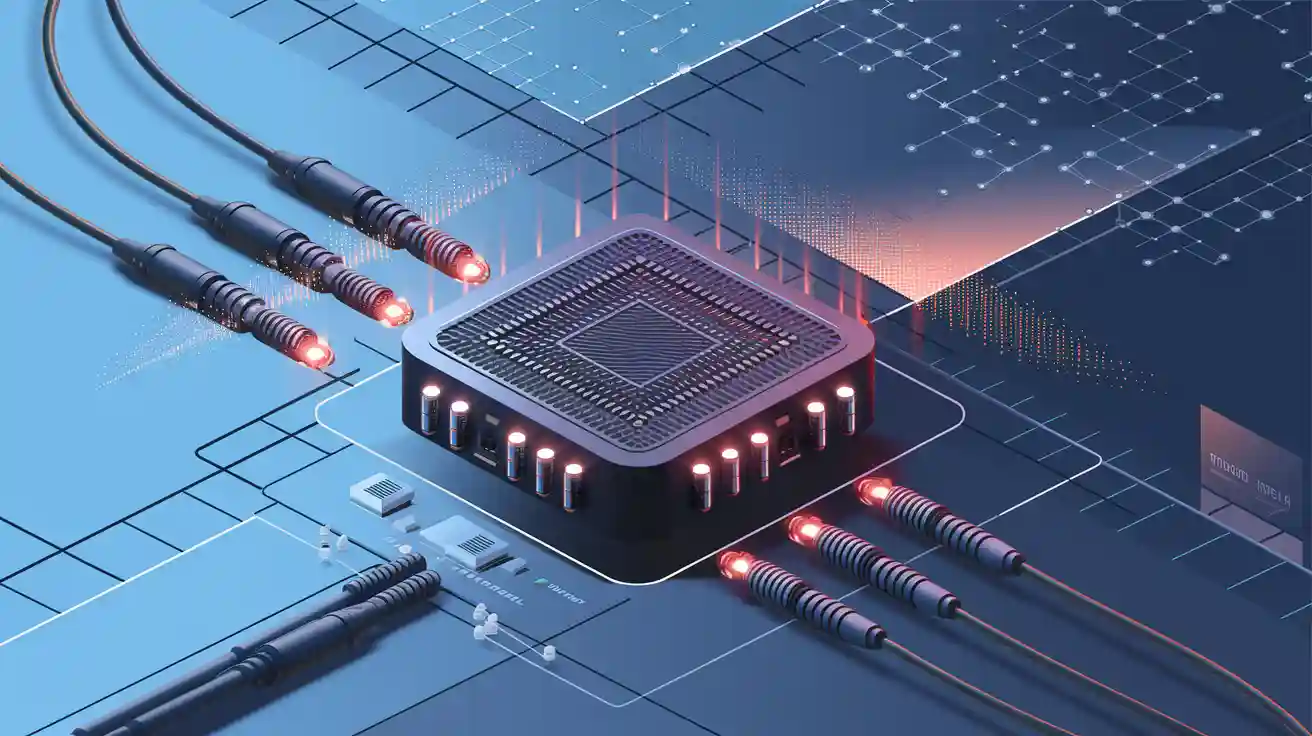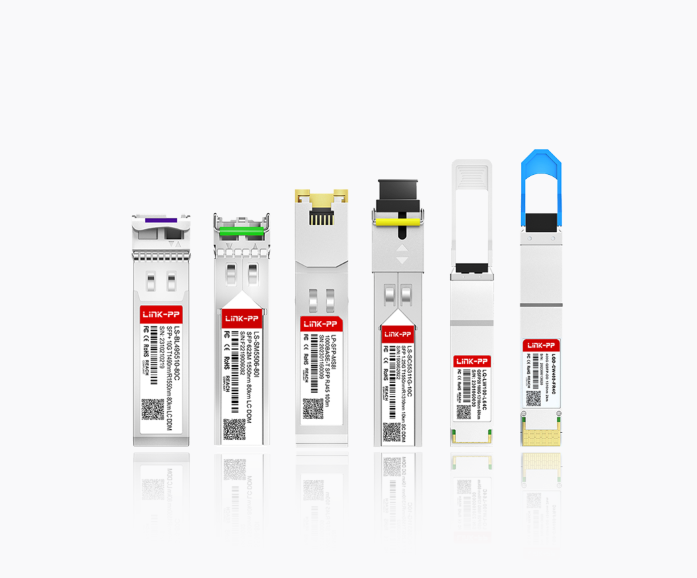
In high-speed fiber optic networks, optical transceivers like XFP and SFP+ play a critical role in ensuring seamless data transmission. While both support 10Gbps speeds, they differ significantly in design, compatibility, and application. This article explores the distinctions between XFP and SFP+ modules, their interoperability, and why LINK-PP stand out as a reliable manufacturer for modern networking needs.
What is an XFP Optical Transceiver?
Introduced in 2002 under the XFP Multi-Source Agreement (MSA), the XFP (10 Gigabit Small Form Factor Pluggable) module was one of the earliest 10G transceivers. It supports hot-swapping and operates across wavelengths like 850nm, 1310nm, and 1550nm. XFP modules are protocol-agnostic, making them suitable for applications such as:
10G Ethernet
10G Fibre Channel
SONET/SDH OC-192
OTN OTU-2
XFP modules are larger than SFP+ counterparts but offer better heat dissipation, ideal for environments requiring stable thermal performance.
What is an SFP+ Optical Transceiver?
The SFP+ (Enhanced Small Form Factor Pluggable) is an upgraded version of the SFP standard, released in 2006. It adheres to IEEE 802.3ae, SFF-8431, and SFF-8432 protocols. Key features include:
Compact size for high-density deployments
Support for 10Gbps, 16G Fibre Channel, and 32G Fibre Channel
Compatibility with SFP ports (at lower speeds)
Unlike XFP, SFP+ modules offload signal modulation, clock recovery, and MAC functions to the host device, reducing module complexity and cost. This makes SFP+ a popular choice for data centers and enterprise networks.
XFP vs. SFP+: Key Differences

The table below summarizes the technical distinctions between XFP and SFP+ optical transceivers:
Feature | XFP | SFP+ |
|---|---|---|
Size & Form Factor | Larger | Compact |
Data Rate | Fixed 10 Gbps | 6 Gbps to 16 Gbps (commonly 10 Gbps) |
Connector Type | LC connectors | LC connectors, supports DAC |
Protocol Support | IEEE 802.3ae, XFP MSA | IEEE 802.3ae, SFF-8431, SFF-8432 |
Power Consumption | 1.5W - 3.5W | 0.5W - 1.5W |
Typical Applications | Long-haul networks, legacy systems | High-density switches, modern data centers |
Compatibility | Only XFP ports | Backward-compatible with SFP ports (at 1G/2.5G speeds) |
Cost | Higher due to integrated components | Lower; simplified design reduces manufacturing costs |
Heat Dissipation | Superior due to larger size | Moderate; relies on host board for thermal management |
Can XFP and SFP+ Modules Interoperate?
Yes, XFP and SFP+ optical transceivers can communicate under specific conditions:
Matching Parameters: Both modules must operate at the same wavelength (e.g., 1310nm) and data rate (10Gbps).
Fiber Compatibility: Use the same fiber type (e.g., OM3/OM4 multimode or OS2 single-mode).
For example, a LINK-PP 10G XFP transceiver (1310nm, 10km) can connect to a LINK-PP 10G SFP+ transceiver (1310nm, 10km) via LC duplex fiber. However, they cannot be swapped in the same port due to size and protocol differences.
Why Are SFP+ Modules More Popular?
SFP+ dominates the 10G market for several reasons:
Cost-Efficiency: Lower power consumption and simplified design reduce operational expenses.
High Density: Compact size allows more ports per rack unit, crucial for data centers.
Flexibility: Supports speeds from 1G to 32G, ensuring scalability.
Brands like LINK-PP offer industry-leading SFP+ optical transceivers that comply with MSA standards, ensuring seamless integration with Cisco, Juniper, and Huawei devices.
When to Choose XFP or SFP+?
Opt for XFP if:
You require robust thermal performance for long-distance transmission (e.g., 80km+).
Legacy infrastructure lacks SFP+ support.
Choose SFP+ for:
High-density deployments (e.g., cloud data centers).
Cost-sensitive projects requiring future scalability.
LINK-PP optical transceivers provide both XFP and SFP+ options, certified for compatibility with major OEMs.
Conclusion
While 25G/400G technologies are emerging, 10G optical transceivers remain vital for global networks. XFP modules excel in specialized long-haul scenarios, whereas SFP+ delivers unmatched density and affordability for modern enterprises. By selecting LINK-PP optical transceivers, businesses ensure reliable performance, compliance, and cost savings.
FAQ
What are the key differences between XFP and SFP+ modules?
XFP modules are larger and consume more power, while SFP+ modules are compact and energy-efficient. XFP supports long-distance transmission, making it ideal for industrial applications. SFP+ excels in high-density setups like data centers due to its smaller size and versatility.
Can you use XFP and SFP+ modules interchangeably?
No, you cannot use them interchangeably. XFP and SFP+ modules have different form factors and interface standards. Ensure your networking equipment supports the specific module type before installation to avoid compatibility issues.
Which module is better for high-speed data centers?
SFP+ modules are better for high-speed data centers. Their compact design supports high-density setups, and they offer energy efficiency. These features make SFP+ modules a preferred choice for modern, scalable networks.
Are XFP modules still relevant in modern networks?
Yes, XFP modules remain relevant for specific use cases. They are ideal for long-distance data transmission and industrial applications requiring robust performance. However, SFP+ modules dominate in high-density and energy-efficient environments.
How do you choose between XFP and SFP+ modules?
Consider your network's requirements. Choose XFP for long-distance or legacy systems. Opt for SFP+ if you need compact, energy-efficient solutions for high-speed, high-density environments like data centers or enterprise networks.




